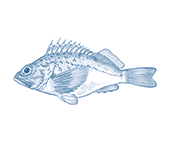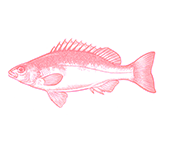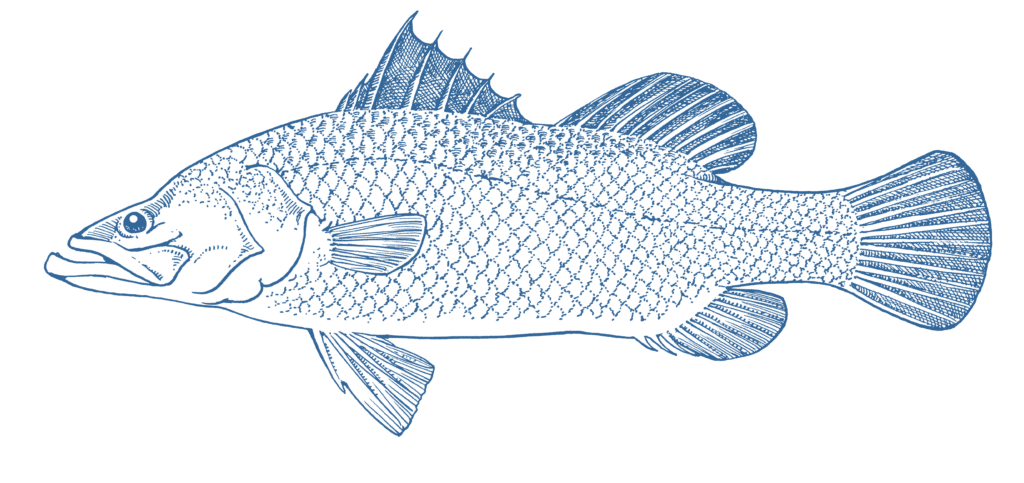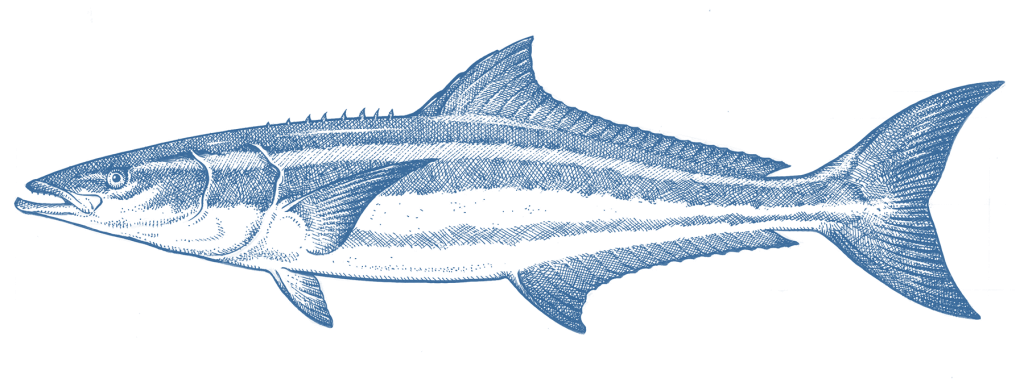




- Say No
Farmed
Region:
TAS
Note: Imported farmed Atlantic salmon is available in Australia but has not been assessed in our Guide. For more information on imported products, look for the country of origin labelled on the packaging and refer to seafood guides produced in that country.
- This rating applies to Atlantic salmon farmed by Huon.
- Atlantic salmon is a non-native species that is farmed in sea cages off the coast of Tasmania.
- Significant environmental impacts of salmon farming have been recorded in Macquarie Harbour, which is a unique and sensitive waterway adjacent to a World Heritage Area.
- Low levels of oxygen and dead zones have been found in the Harbour, which scientists believe are linked to high salmon production. Pollution impacts from salmon farming have impacted the Macquarie Harbour Wilderness World Heritage Area.
- Management actions to minimise the effects of salmon farming include reducing the amount of salmon that can be farmed and temporarily destocking some areas. It is not yet clear if these measures will be effective.
- There are concerns that a dramatic expansion of the amount of salmon farmed in other areas of the Tasmanian coastline are not suitably cautious and could lead to high environmental impacts.
- Huon uses wildlife controls in a way that is having lethal impacts on protected seals.
- Salmon farms in Macquarie Harbour pose a serious extinction risk to an endangered marine species called the Maugean skate, probably the world’s rarest skate, found only in that area.
- Atlantic salmon are carnivorous fish that are dependent on wild caught fish that is manufactured into fish feed. Huon has made significant improvements in the sourcing and efficient use of wild marine feed ingredients.
- Huon (37,264t in 2020/21)
Atlantic salmon is a non-native species farmed by three major companies in Tasmanian waters. Farmed Atlantic salmon is the highest value and volume fishery product in Australia. This rating applies to Atlantic salmon farmed by Huon.
Atlantic salmon are farmed in sea cages that are open to the ocean, with any waste from the farm washed into the surrounding water. Huon farms Atlantic salmon in Storm Bay, the Huon estuary and the D’Entrecasteaux Channel in southeastern Tasmania, and in Macquarie Harbour on the west coast of Tasmania. Serious environmental impacts attributed to salmon farming have been recorded in Macquarie Harbour in recent years, which scientists believe are linked to increased volumes of waste from the salmon farms (fish faeces and excess fish feed). These impacts include declines in the amount of oxygen dissolved in the waters of the Harbour, as well as pollution of the seafloor that extends into the World Heritage listed area.
Management actions taken to reduce the impact of salmon farming on Macquarie Harbour have included reducing the amount of salmon that can be farmed in the area significantly from a period in the mid-late 2010s when salmon farming companies were allowed to grow far more salmon in the Harbour than that unique and vulnerable environment could tolerate. The Harbour is additionally impacted by climate change, historical mining in catchments and hydro power generation. The increase in salmon farming, in addition to these other stressors, resulted in pollution that drove severe depletion of oxygen in deeper Harbour waters. This created ‘dead zones’ throughout the Harbour, including in a World Heritage Area, and caused over a million farmed fish to die from environmental stress and related disease outbreaks. Though a cap on the amount of fish able to be farmed in the Harbour has been reduced since this time, in recent years companies were able to modify their production in a way that slightly increased the level of fish farming and resultant nutrient pollution. To address this, a new form of production limit is being introduced in 2023. Oxygen levels in Macquarie Harbour have shown some signs of recovery since the permitted production was reduced, but remain problematic despite favourable environmental conditions in recent years, and potentially dangerous deoxygenation events have continued to occur.
These impacts from salmon farming in Macquarie Harbour pose a serious threat to a marine species which is likely the world’s rarest skate. The Maugean skate is categorised as ‘Endangered’ under Australia’s national environment law. It is unique to Tasmania, and is now only found in Macquarie Harbour. Scientists consider that the species is at serious risk of imminent extinction; and while the skate’s population is poorly understood and very difficult to study, there is evidence that serious impacts to the population have occurred. Significant and welcome conservation efforts are underway, and restoring the health of Macquarie Harbour as soon and as much as possible must be an urgent priority to avert extinction of the Maugean skate. GoodFish is aware of no other Australian aquaculture industry contributing this degree of conservation risk to an endangered species.
Salmon is also currently farmed in other areas that are better flushed with water than Macquarie Harbour; the effects of waste around these sea cages have been studied and appear to have minor and short-lived impacts on seafloor-dwelling species; sea cages are also rotated so that areas below the cages are allowed to recover. A significant quantity of antibiotics was deployed to treat a disease that could have been prevented with vaccination in 2022 at a Huon salmon farm site. Residues were detected in wild fish populations but not in seabed sediments significantly beyond farm site boundaries.
Huon is significantly expanding farming production into Storm Bay in southeastern Tasmania. The management of this expansion by the Tasmanian government has been seriously concerning, with environmental experts on a panel tasked with reviewing the approval of this expansion resigning in protest at the lack of implementation of environmental and biosecurity protections, and tools that enable careful monitoring and management of fish farm pollution impacts. Management and monitoring of the industry is not considered by experts to be sufficiently precautionary or independent from industry to deliver confidence that the industry will expand without causing further serious environmental impacts.
For example, if salmon production in Storm Bay is increased to planned full capacity, the additional nitrogen (a key fertilising nutrient) load to the local marine environment, could be equivalent to more than the total output of all Tasmania’s sewage outfall. If production is scaled up to full production levels, the nitrogen load would eventually be equivalent to the entire sewage outfall of NSW and Victoria. It is unknown what impact this would have on the marine environment. It is concerning, given the environmental impact of salmon farming in Macquarie Harbour, that rapid expansion is planned without a highly precautionary level of environmental protection in place.
Seals pose a safety and production risk at some Atlantic salmon farming sites in Tasmania, where they seek to break into sea cages to feed on farmed stock. Huon uses wildlife controls in a way that is having a lethal effect on seals, which are a protected species in Australia. Huon’s use of wildlife controls has been responsible for the highest number of seal deaths in the salmon farming industry, according to recent reports. This does not accord with best practice internationally.
Huon is rapidly implementing a new system that increases the portion of the salmon farming production cycle that occurs on land, using a large onshore ‘nursery’ facility. Because wastewater from this system is recirculated and treated before discharge to the natural environment, it creates potential for a significant reduction in environmental impacts and reduction of the exposure of farmed fish to unfavourable environmental conditions per unit of farm production. This is a welcome innovation.
Atlantic salmon is a carnivorous species, and the fish require moderate amounts of fish protein in formulated fish feed. Feed manufacturers use fish caught from the wild as a part of the feed used in salmon farms. Huon has made significant progress in reducing the dependence of their salmon farming on wild fish ingredients and their feed manufacturers have greatly improved the sustainability of these ingredients in their sourcing policies. This is welcome, and shows a level of innovation that, if applied to other environmental impacts of their operation, has strong potential to improve the GoodFish ranking of Huon’s farmed salmon in future.





